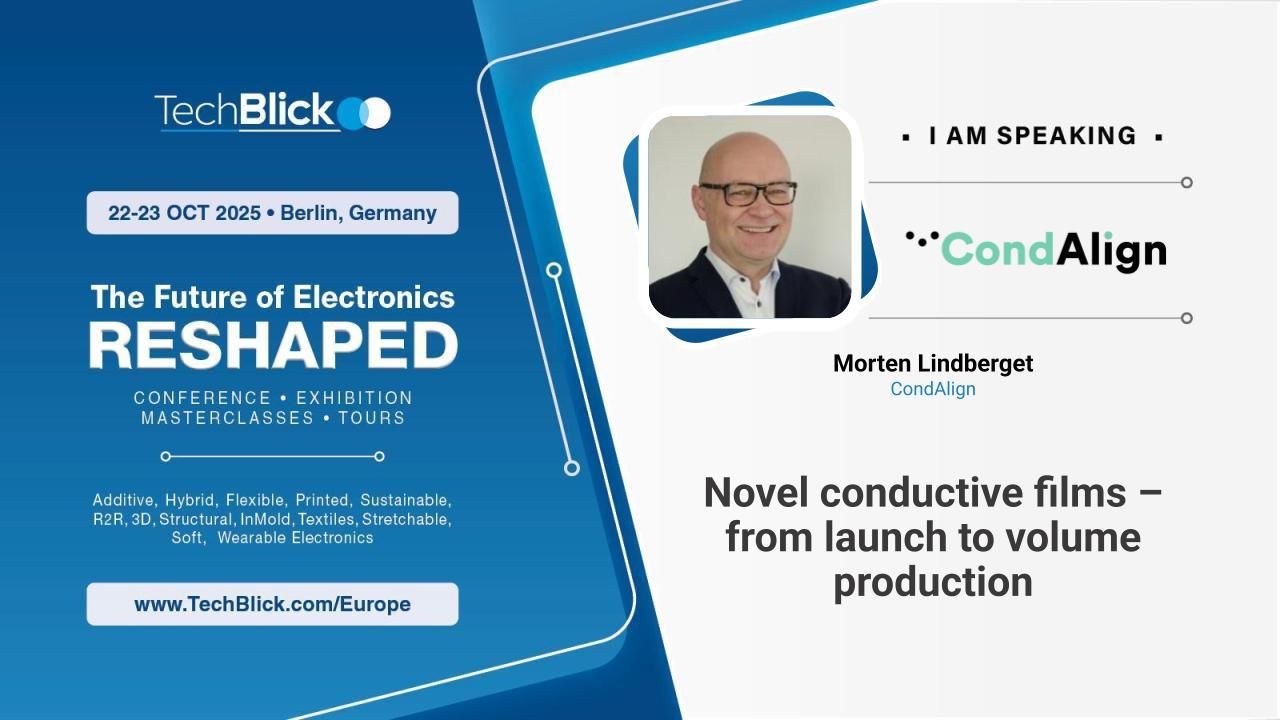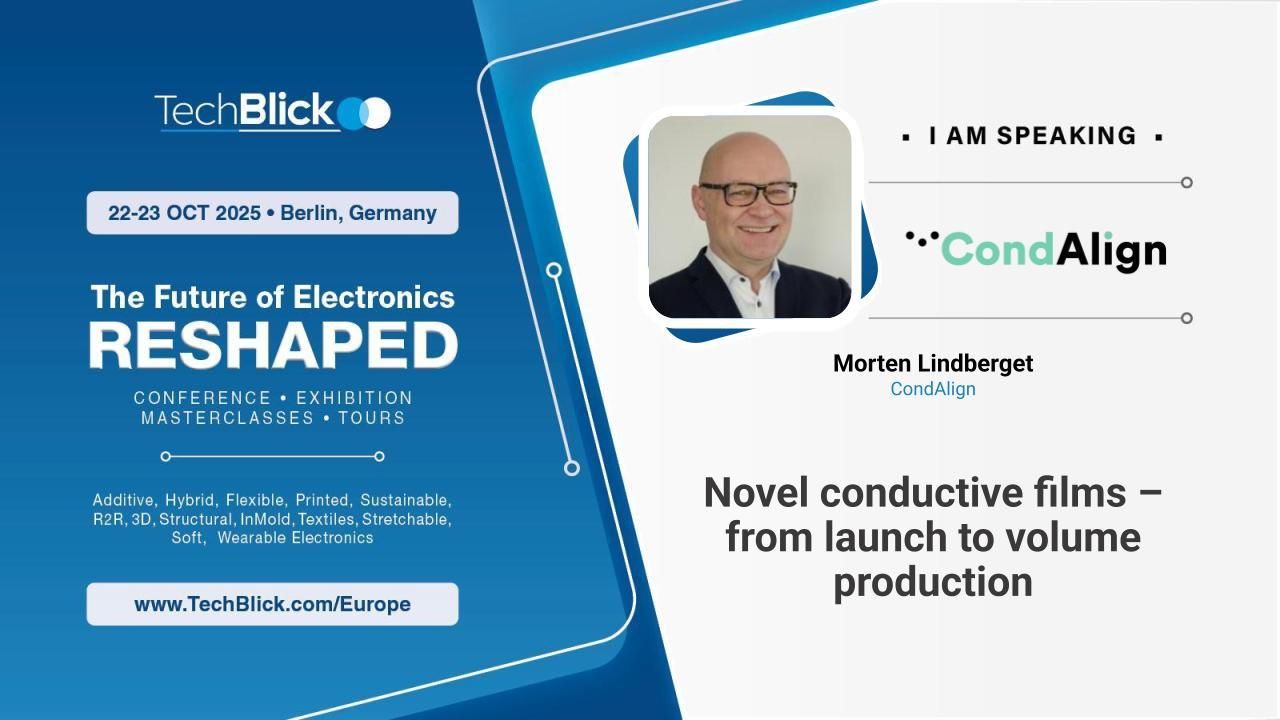

CondAlign - Novel conductive films – from launch to volume production
The Future of Electronics RESHAPED Berlin October 2025
TechBlick Event
Information
Anisotropic conductive films based on an innovative technology for particle alignment have been tested and qualified and have proven its value and advantages in several application areas since its introduction two years ago. However, gaining acceptance and scaling up the use of a novel product that requires a new mind set from designers and product owners is not a walk in the park.
Products based on this technology include anisotropic electrically conductive films (ACF) as well as thermal conductive materials and films (TIM). Both groups of products are produced with the same innovative technology for achieving anisotropic structure and conductivity. This allows for significantly reducing the amount of filler particles, which again allows for reduced cost in production and assembly, improved performance, and reduced carbon footprint, compared to related products.
The qualification with respect to technical performance, BOM-cost reduction, and sustainability is a requirement and starting point for entering the industrialization phase, where processes for high volume assembly need to be established and implemented.
Processes and equipment for current solutions are already established and in place, and a novel technology must prove its commercial potential before an integrator can move to investing in new processes and equipment.
The presentation will focus on this transition from technical qualification to high volume efficient production, industrialization, and commercial integration.
Products based on this technology include anisotropic electrically conductive films (ACF) as well as thermal conductive materials and films (TIM). Both groups of products are produced with the same innovative technology for achieving anisotropic structure and conductivity. This allows for significantly reducing the amount of filler particles, which again allows for reduced cost in production and assembly, improved performance, and reduced carbon footprint, compared to related products.
The qualification with respect to technical performance, BOM-cost reduction, and sustainability is a requirement and starting point for entering the industrialization phase, where processes for high volume assembly need to be established and implemented.
Processes and equipment for current solutions are already established and in place, and a novel technology must prove its commercial potential before an integrator can move to investing in new processes and equipment.
The presentation will focus on this transition from technical qualification to high volume efficient production, industrialization, and commercial integration.
